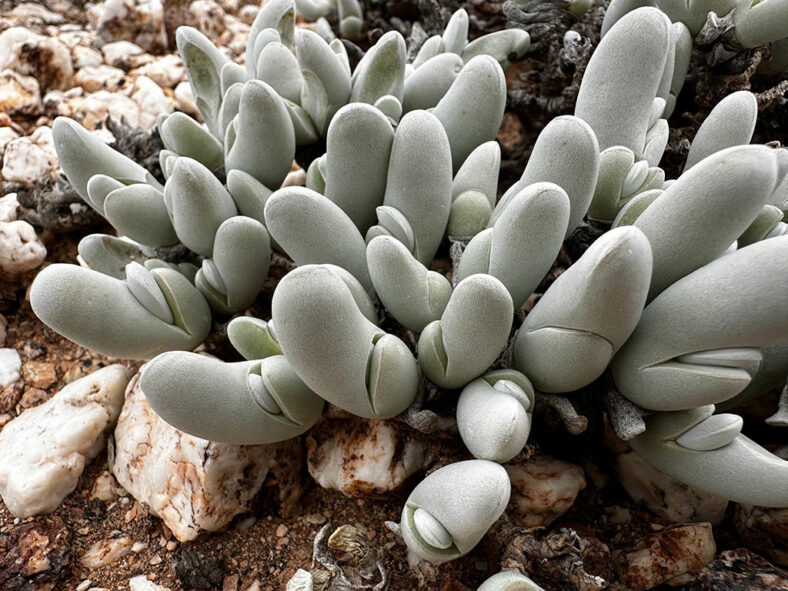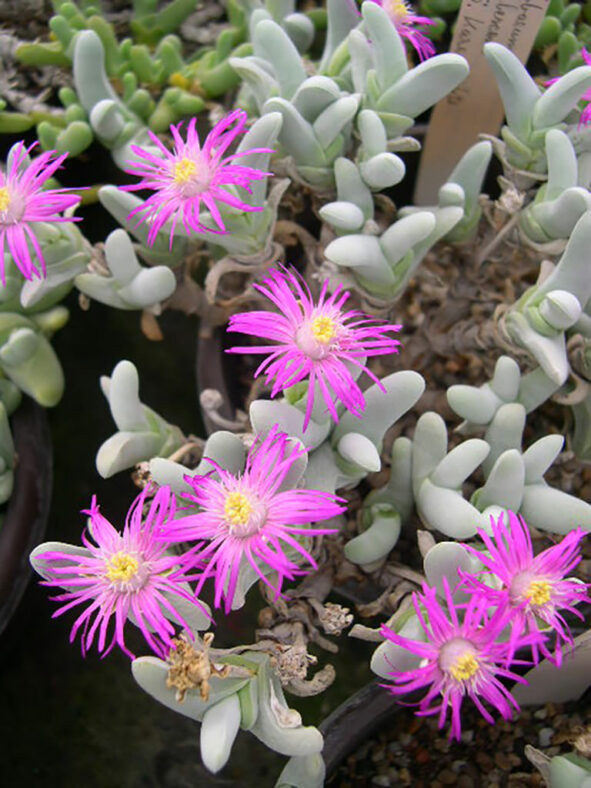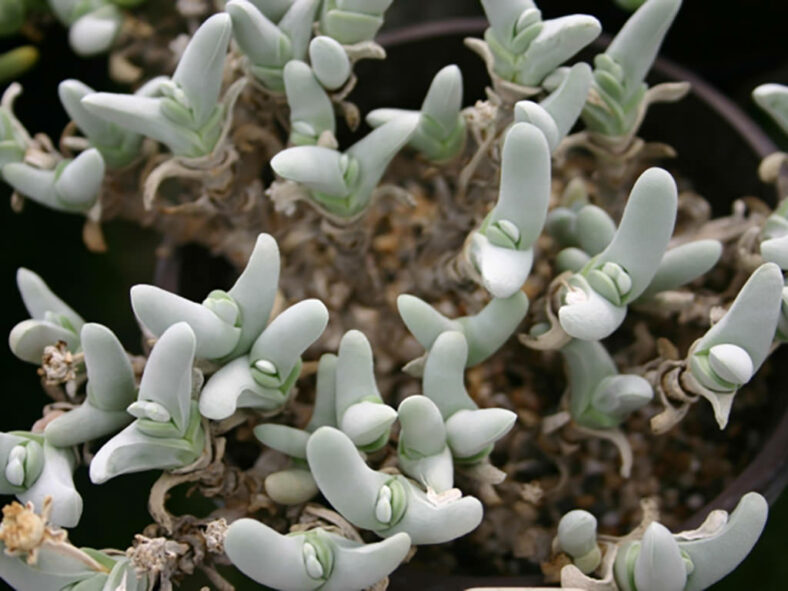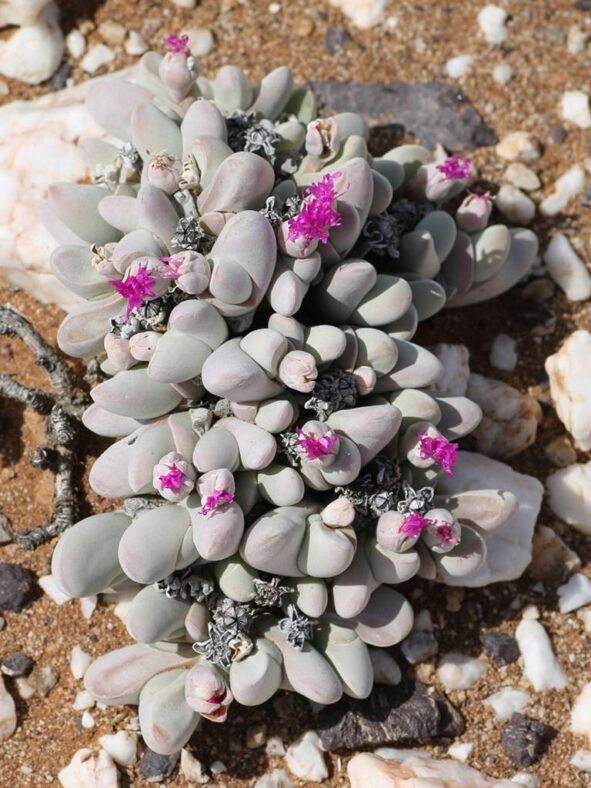Gibbaeum pubescens is the earliest known species of the genus. It was grown in England before 1795 when it was published as Mesembryanthemum pubescens.
Scientific Name
Gibbaeum pubescens (Lettsom ex Haw.) N.E.Br.
Common Name(s)
Shark Beak
Synonym(s)
Gibbaeum argenteum, Mesembryanthemum pubescens
Scientific Classification
Family: Aizoaceae
Subfamily: Ruschioideae
Tribe: Ruschieae
Genus: Gibbaeum
Etymology
The specific epithet "pubescens" (pronounced pew-BES-senz) means "hairy" and refers to the tiny hairs on the leaves of this species.
Origin
Gibbaeum shandii is native to South Africa. It grows on white quartz flats from Barrydale to Ladismith in the Western Cape province.
Description
Gibbaeum pubescens is a dwarf succulent that forms compact clumps of short, densely arranged branches with pairs of unequal leaves covered with short, soft, silvery hairs. The plant has a woody, shortly branched rootstock raised well above the ground. The leaves are fleshy and joined at the base. The larger leaf is cylindrical-ovoid, measuring up to 1.2 inches (3 cm) long, while the smaller leaf is half-moon shaped and about one-third the size of the larger one.
In late winter and spring, Gibbaeum pubescens produces solitary flowers with numerous narrow petals ranging from pale to deep magenta. The flowers can reach a diameter of 0.6 inches (1.5 cm). The fruits are capsules with six locules.

How to Grow and Care for Gibbaeum pubescens
Light: Gibbaeum pubescens requires bright light but not too much direct sunlight. So, a windowsill that receives 4 to 5 hours of direct sunlight in the morning and partial shade in the afternoon will be a perfect spot for indoor growing.
Soil: The plant thrives in porous soil, allowing the water to drain away quickly. Therefore, use commercial soil for succulents or make your own well-draining mix.
Temperature: High temperatures are not a problem as long as there is plenty of fresh air, but this plant is not cold-hardy. It grows best in USDA Plant Hardiness Zones 9b to 11b, with average minimum winter temperatures ranging from 25 to 50 °F (-3.9 to 10 °C).
Watering: To keep your Gibbaeum pubescens healthy, it is most important to know when, how much, and how often to water it. During the dormant period, usually in winter, the plant requires little or no water. From spring to fall, water it thoroughly but allow the soil to dry between waterings.
Fertilizing: As long as you repot this plant every two years, it does not need fertilizer.
Repotting: Even if your plant can stay happy in the same pot for years, you can repot it once in a while to give it more space anytime during the growing season. However, the best time is at the beginning of the growing season.
Propagation: One simple way to propagate this plant is to divide clumps. Another option is to start from seeds by sowing them in well-draining soil during spring. The best time for dividing is late spring or early summer.
Learn more at How to Grow and Care for Mesembs.
Toxicity of Gibbaeum pubescens
Gibbaeum pubescens is considered non-toxic and safe around kids and pets.
Links
- Back to genus Gibbaeum
- Succupedia: Browse succulents by Scientific Name, Common Name, Genus, Family, USDA Hardiness Zone, Origin, or cacti by Genus
Photo Gallery
Click on a photo to see a larger version.


